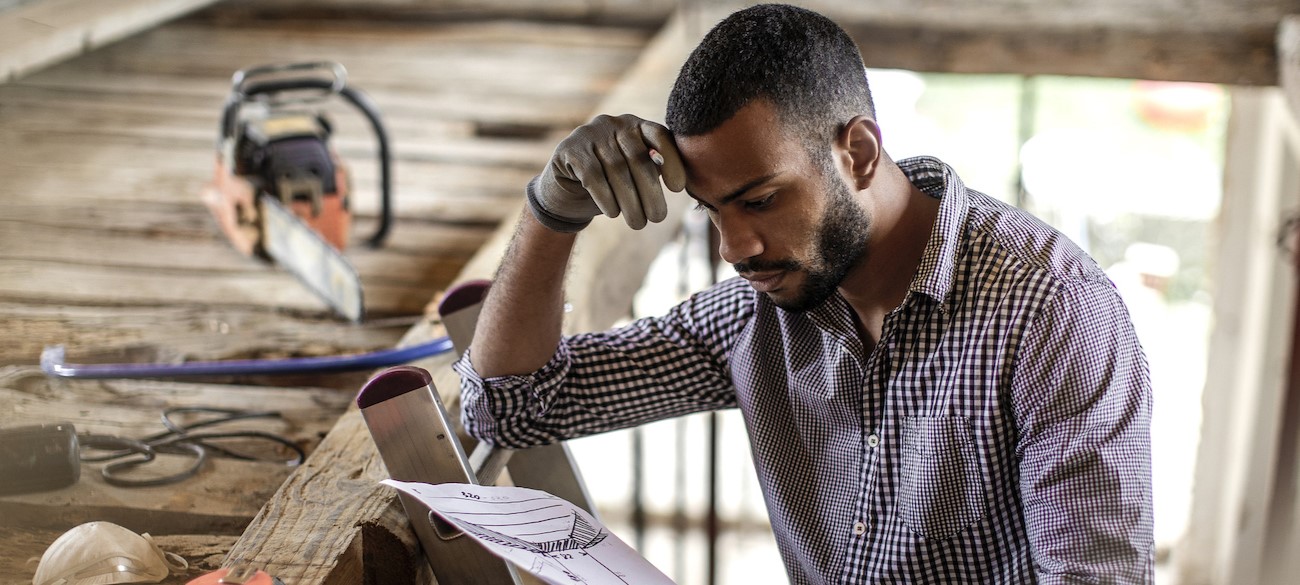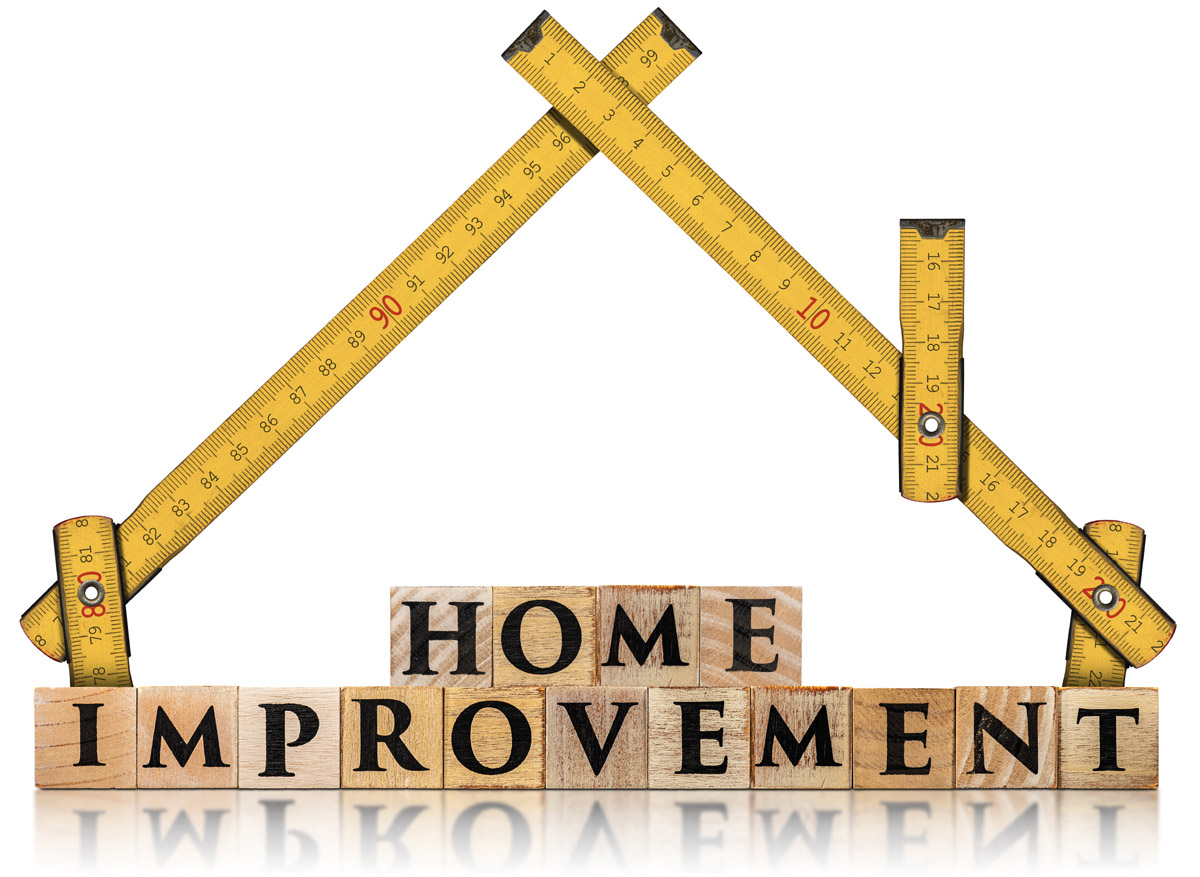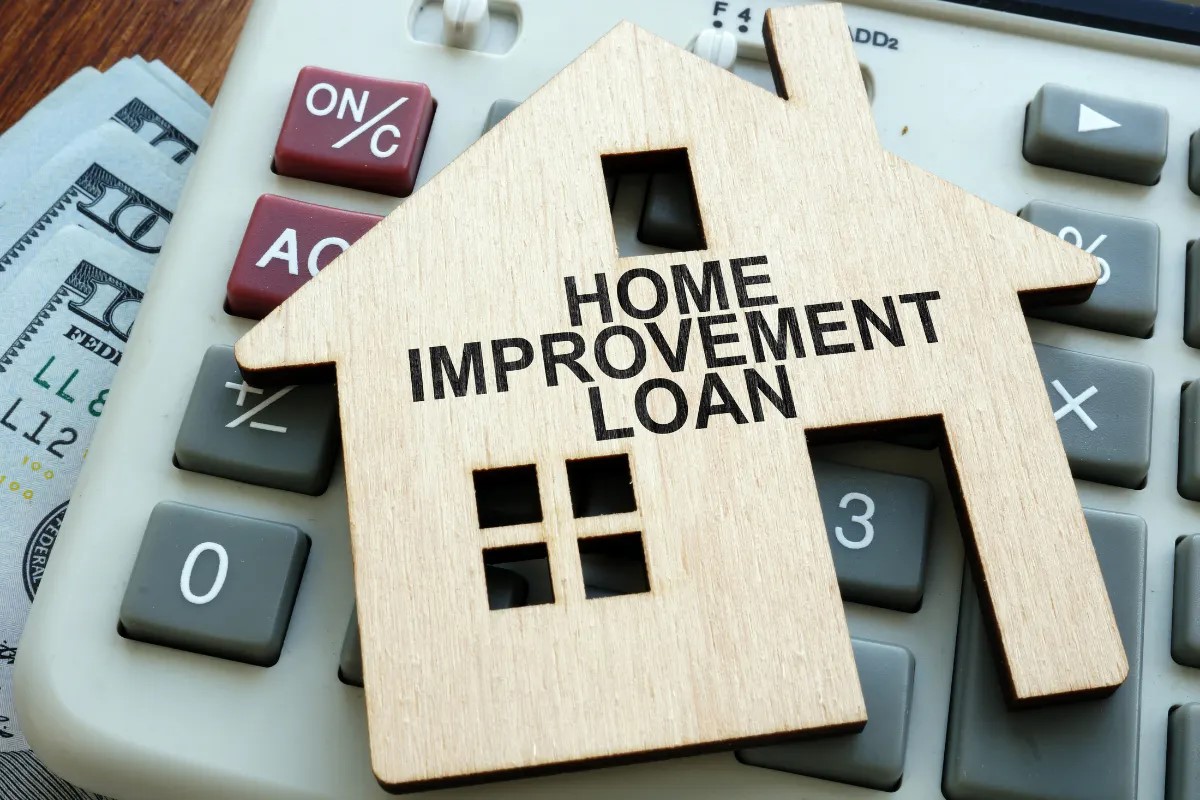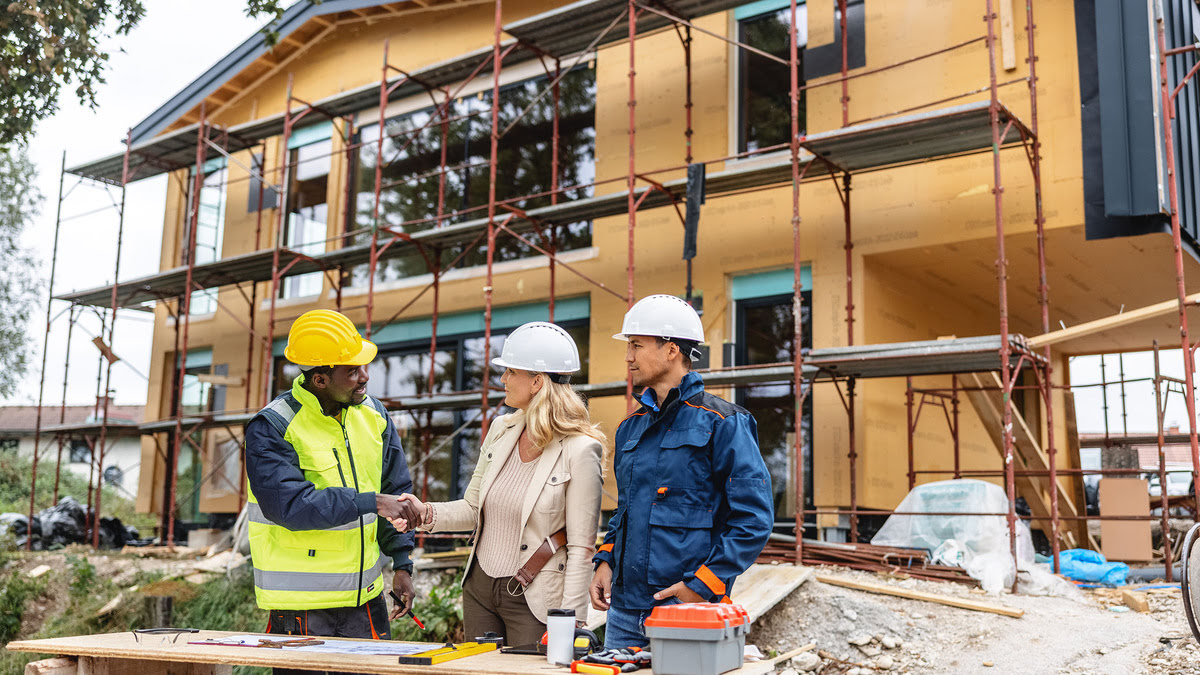Home>Home Maintenance>How To Get A Home Repair Loan With Bad Credit


Home Maintenance
How To Get A Home Repair Loan With Bad Credit
Modified: March 6, 2024
Need a home repair loan but have bad credit? Discover how you can still get the funds you need for home maintenance, even with a less-than-perfect credit score.
(Many of the links in this article redirect to a specific reviewed product. Your purchase of these products through affiliate links helps to generate commission for Storables.com, at no extra cost. Learn more)
Introduction
Owning a home can bring a sense of pride and accomplishment, but it also comes with its fair share of responsibilities. One of the major responsibilities is the upkeep and maintenance of your property. However, home repairs can be costly, especially when unexpected issues arise.
For many homeowners, the idea of financing these repairs can be daunting, especially if they have bad credit. Having a low credit score can make it challenging to secure a traditional home repair loan from a traditional lender. But fear not! There are still options available for those with less-than-perfect credit.
In this article, we will explore how you can get a home repair loan, even if you have bad credit. We will delve into various financing options, including government programs and alternative lenders. Additionally, we will discuss ways to improve your credit score and increase your chances of loan approval.
So, whether you need to fix a leaky roof, repair a faulty plumbing system, or renovate your kitchen, read on to discover how you can make your home repairs a reality, regardless of your credit history.
Key Takeaways:
- Even with bad credit, homeowners can secure home repair loans through alternative lenders, government programs, and creative financing options. It’s important to research, prepare documents, and communicate with lenders for successful loan approval.
- Improving credit score, understanding loan terms, and budgeting for timely repayments are crucial for homeowners with bad credit. Responsible financial practices and open communication with lenders can lead to successful home repairs.
Understanding Home Repair Loans
Before diving into the specifics of getting a home repair loan with bad credit, it’s important to have a clear understanding of what these loans entail. Home repair loans are financial tools designed to help homeowners cover the costs of repairs, renovations, or improvements to their homes.
These loans come in various forms, such as personal loans, home equity loans, and home equity lines of credit (HELOCs). Each type of loan has its own set of requirements, terms, and interest rates. It’s crucial to carefully consider which option suits your needs and financial situation best.
Personal loans are unsecured loans that can be used for a variety of purposes, including home repairs. These loans typically have higher interest rates and shorter repayment terms compared to secured loans.
On the other hand, home equity loans and HELOCs are secured loans that use your home as collateral. Home equity loans provide a lump sum of money upfront, while HELOCs offer a revolving line of credit that you can draw from as needed.
When considering a home repair loan, it’s essential to factor in the interest rates, fees, repayment terms, and other associated costs. Taking the time to research and compare different lenders and loan options can help you find the most affordable and suitable solution for your needs.
Additionally, be sure to consider the current condition of your home and the urgency of the repairs. Some repairs may be more critical than others and require immediate attention, while others can be postponed until you’ve secured the necessary funds.
Now that you have a basic understanding of home repair loans, let’s explore how bad credit can impact your loan options and what steps you can take to overcome this hurdle.
The Impact of Bad Credit
Your credit score plays a significant role in determining your eligibility for loans and the terms you’re offered. A low credit score can affect your ability to secure favorable loan terms, including lower interest rates and higher loan amounts.
When it comes to home repair loans, bad credit can limit your options and make it more challenging to find a lender willing to approve your application. Lenders view individuals with bad credit as high-risk borrowers, as their credit history suggests a higher likelihood of defaulting on payments.
If you manage to find a lender who is willing to work with borrowers with bad credit, you may encounter higher interest rates, stricter repayment terms, and lower loan amounts. These factors can make it more difficult to afford the necessary repairs and can potentially lead to a cycle of debt.
However, having bad credit doesn’t mean you’re completely out of options. There are steps you can take to improve your credit score and increase your chances of securing a home repair loan with better terms.
First and foremost, it’s crucial to understand what factors contribute to your credit score. Payment history, credit utilization, length of credit history, credit mix, and new credit inquiries all play a role in determining your creditworthiness. By focusing on these areas and improving your credit habits, you can gradually rebuild your credit.
Start by making all of your payments on time, including credit card bills, loan repayments, and utility bills. Consistent, timely payments demonstrate your commitment to financial responsibility and can help boost your credit score over time.
Next, focus on reducing your credit utilization, which is the percentage of your available credit that you’re currently using. Aim to keep your credit utilization below 30% to demonstrate responsible credit usage and improve your creditworthiness.
Consider reviewing your credit report for any errors or discrepancies. If you find any inaccuracies, dispute them with the credit bureaus and have them corrected. It’s essential to have an accurate credit report, as errors can negatively impact your credit score.
In addition to these steps, avoid taking on new credit or increasing your debt burden while you’re working on improving your credit score. This means refraining from applying for new loans or credit cards unless absolutely necessary.
By taking these proactive measures, you can gradually rebuild your credit and increase your chances of obtaining a home repair loan with better terms. However, keep in mind that improving your credit takes time and patience. It’s important to have realistic expectations and a long-term mindset when it comes to credit improvement.
Now that we understand the impact of bad credit, let’s move on to researching lenders and exploring alternative financing options for home repair loans.
Researching Lenders
When it comes to getting a home repair loan with bad credit, it’s essential to research different lenders and explore the options available to you. While traditional banks and credit unions may have strict credit requirements, there are alternative lenders who specialize in working with individuals with less-than-perfect credit.
One of the first steps in researching lenders is to check online loan marketplaces or comparison websites. These platforms allow you to input your credit score and loan requirements to receive quotes from multiple lenders. This can help you compare interest rates, terms, and fees, allowing you to make an informed decision.
Additionally, it’s worth looking into local community banks or credit unions that may have more lenient eligibility requirements. These institutions often have a more personalized approach to lending and may be willing to consider your individual circumstances rather than solely relying on your credit score.
Another option is to seek out peer-to-peer lending platforms. These platforms connect borrowers directly with individual investors who are willing to fund their loans. Peer-to-peer lending can be a viable alternative for those with bad credit, as the lending decision is often based on a broader assessment of the borrower’s financial situation.
While researching lenders, be sure to read customer reviews and check their reputation. Look for lenders who are transparent and provide clear terms and conditions. Avoid lenders who promise guaranteed approval or ask for upfront fees, as these may be signs of predatory lending practices.
Remember to consider the specific requirements of each lender. Some lenders may have eligibility criteria beyond credit score, such as minimum income or employment history. By familiarizing yourself with these requirements in advance, you can save time by applying only to lenders who are likely to consider your application.
It’s also worth noting that some lenders may offer secured loans, where collateral is required to secure the loan. While this can increase your chances of approval, it’s important to carefully consider the risks associated with using your home or other assets as collateral.
Researching lenders is a crucial step in finding a home repair loan that suits your needs and financial situation. By exploring a variety of lenders and understanding their requirements, you can increase your chances of finding the right loan option for your specific circumstances.
Next, we will discuss government home repair programs that may offer assistance to homeowners with bad credit.
Exploring Government Home Repair Programs
If you have bad credit and are in need of home repairs, exploring government home repair programs can be a viable option. The government offers various programs that provide financial assistance to homeowners for necessary repairs and improvements.
One such program is the U.S. Department of Housing and Urban Development’s (HUD) Title 1 Property Improvement Loan Program. This program provides loans to homeowners for the purpose of making necessary repairs, remodeling, or improving their homes. The loans are insured by the Federal Housing Administration (FHA), making them more accessible to borrowers with bad credit.
Another option is the USDA Section 504 Home Repair Program. This program provides loans and grants to low-income homeowners in rural areas for essential repairs, renovations, and accessibility improvements. The loans have favorable terms, including low-interest rates and long repayment periods.
Furthermore, local and state governments often have their own home repair programs or initiatives aimed at assisting residents with home repairs. These programs may offer grants, loans, or subsidies to help cover the costs of repairs. Contact your local housing agency or check their website to see if they have any programs available.
It’s important to note that government home repair programs have specific eligibility criteria and may prioritize certain types of repairs or target specific groups, such as low-income individuals or those with disabilities. Be sure to thoroughly research the requirements and guidelines of each program to determine if you qualify.
In some cases, these programs may have income restrictions, meaning your income must fall below a certain threshold to be eligible. However, even if you exceed the income limit, you may still be able to qualify for assistance if you have exceptional circumstances, such as being a senior citizen or having a disability.
Keep in mind that government home repair programs often have limited funding and may have a waiting list. Therefore, it’s important to apply as early as possible and have all the necessary documentation ready.
Exploring government home repair programs can be a valuable resource for homeowners with bad credit in need of financial assistance for repairs. These programs can provide affordable loan options or even grants to help you make necessary improvements to your home.
Next, we will discuss alternative financing options for home repairs, which can be particularly useful for individuals with bad credit.
Alternative Financing Options
If you have bad credit and are unable to secure a traditional home repair loan, don’t despair. There are alternative financing options available that can help you fund your home repairs without relying on a traditional lender.
One option is to consider a home improvement credit card. These credit cards are specifically designed for home improvement expenses and often offer promotional financing terms, such as zero percent interest for a certain period. However, it’s important to read the terms and conditions carefully, as high interest rates may apply once the promotional period ends.
Another alternative is to explore crowdfunding platforms. Crowdfunding allows you to create a campaign online and share your story and repair needs with others. Friends, family, and even strangers can contribute funds to help you cover the costs of your repairs. However, it’s important to keep in mind that there’s no guarantee of success, and it may take time to reach your funding goal.
If you have a retirement account, such as an IRA or 401(k), you may be able to borrow against it. Some retirement plans allow for loans, which can be used to finance home repairs. However, it’s important to understand the potential implications, such as early withdrawal penalties and potential tax consequences.
Additionally, you can explore the option of applying for a cosigned loan. A cosigner with good credit can boost your chances of loan approval and help secure more favorable loan terms. However, keep in mind that both you and the cosigner are equally responsible for repaying the loan, and any missed payments can negatively affect both credit scores.
An alternative financing option worth considering is home equity sharing. This involves partnering with an investor who provides the necessary funds for your home repairs in exchange for a share of the property’s future appreciation. This option allows you to access funds without taking on additional debt or going through a traditional loan approval process.
Lastly, if you have valuable assets, such as jewelry, electronics, or vehicles, you can explore the possibility of pawning or selling these items temporarily to fund your repairs. This option can provide quick cash, but it’s important to weigh the value of the items against the urgency and importance of the repairs.
Exploring alternative financing options can open up opportunities for homeowners with bad credit to secure the funds needed for home repairs. It’s important to carefully consider the terms, risks, and potential implications of each option before making a decision.
Next, we will discuss strategies for improving your credit score, which can increase your chances of obtaining a home repair loan with better terms.
Consider applying for a government-backed loan, such as an FHA 203(k) loan, which may be more lenient on credit requirements for home repairs.
Improving Your Credit Score
If you have bad credit and are looking to secure a home repair loan, taking steps to improve your credit score is crucial. A higher credit score not only increases your chances of loan approval but also opens up access to better loan terms and lower interest rates. Here are some strategies to help you improve your credit score:
1. Pay your bills on time: Payment history is one of the most significant factors affecting your credit score. Make sure to pay all your bills, including credit card payments, loan installments, and utility bills, on time each month. Set up automatic payments or reminders to help you stay on track.
2. Reduce your credit utilization: Credit utilization refers to the percentage of your available credit that you’re currently using. Aim to keep your credit utilization below 30% of your total credit limit. Paying down existing balances and using credit sparingly can help improve your credit utilization ratio.
3. Dispute errors on your credit report: Regularly review your credit report for any errors or discrepancies. If you find any inaccuracies, such as accounts that don’t belong to you or incorrect payment information, dispute them with the credit bureaus. Removing errors can positively impact your credit score.
4. Avoid opening new lines of credit: While it may be tempting to apply for new credit cards or loans, refrain from doing so while you’re working on improving your credit score. Opening new accounts can lower the average age of your credit history and result in additional hard inquiries on your credit report.
5. Diversify your credit mix: Having a mix of different types of credit accounts, such as credit cards, installment loans, and a mortgage, can have a positive impact on your credit score. It demonstrates your ability to manage various types of credit responsibly. If you don’t have a mix of credit accounts, consider diversifying over time.
6. Use credit responsibly: Use your credit cards sparingly and avoid maxing out your credit limits. Make small purchases and pay off the balances in full each month to show responsible credit usage. Avoid carrying high balances on your credit cards, as it can negatively impact your credit score.
7. Keep old accounts open: Closing old credit accounts may seem like a good idea, but it can actually harm your credit score. The length of your credit history matters, so keep your oldest accounts open, even if you’re not actively using them.
Improving your credit score takes time and effort. It’s important to be patient and consistent in your credit management habits. By implementing these strategies, you can gradually rebuild your credit and increase your chances of getting a home repair loan with more favorable terms.
Next, we will discuss the documents and requirements you should prepare when applying for a home repair loan.
Documents and Requirements
When applying for a home repair loan, regardless of your credit history, you will need to gather certain documents and meet specific requirements. These requirements may vary depending on the lender and the type of loan you’re seeking. Here are some common documents and requirements to prepare:
1. Personal identification: You will typically need to provide a valid form of identification, such as a driver’s license, passport, or state-issued ID card.
2. Proof of income: Lenders will want to verify your ability to repay the loan, so you will need to provide proof of income. This can include recent pay stubs, tax returns, and bank statements. Self-employed individuals may need to provide additional documentation, such as business financial statements.
3. Credit history and score: Even if you have bad credit, lenders will still want to review your credit history. Prepare to provide your credit report, which can be obtained from one of the major credit bureaus (Equifax, Experian, or TransUnion). You may also need to provide an explanation letter detailing any negative marks on your credit report.
4. Loan application and financial statements: Lenders will require you to complete a loan application form. Additionally, you may need to provide financial statements, including your assets, liabilities, and any existing debts, to give lenders a clear picture of your financial situation.
5. Proof of homeownership: To qualify for a home repair loan, you will typically need to provide proof of homeownership. This can include a copy of your mortgage statement or deed.
6. Contractor estimates and project details: Depending on the lender’s requirements, you may need to provide contractor estimates or detailed project plans outlining the scope of the repairs or renovations you intend to make. This helps the lender assess the loan amount needed.
7. Additional collateral or guarantees: Depending on the lender’s policies, you may be required to provide additional collateral to secure the loan or have a cosigner with good credit who can guarantee repayment.
It’s important to keep in mind that these are general requirements, and each lender may have specific documentation needs. Before applying for a loan, contact the lender or check their website to understand their specific requirements and gather all necessary documents.
Preparing these documents in advance will streamline the application process and increase your chances of loan approval. Be organized, provide accurate information, and don’t hesitate to reach out to the lender if you have any questions or need clarification on any of the requirements.
Next, we will discuss the process of applying for a home repair loan with bad credit.
Applying for a Home Repair Loan
When applying for a home repair loan with bad credit, it’s important to be prepared and present yourself as a reliable borrower. Here are the steps involved in the application process:
1. Research and compare lenders: Start by researching lenders who specialize in working with individuals with bad credit. Compare their loan terms, interest rates, fees, and eligibility requirements. This will help you narrow down the options and choose the lender that best suits your needs.
2. Gather the required documents: Collect all the necessary documents, including personal identification, proof of income, credit history, loan application forms, and any additional collateral or guarantees required by the lender. Ensure that all documents are accurate and up to date.
3. Complete the loan application: Fill out the loan application form accurately and honestly. Provide any additional information or explanations required by the lender regarding your credit history or financial situation.
4. Submit your application: Submit your completed application and all required documents to the lender. Some lenders may allow you to apply online, while others may require you to apply in person or through the mail. Follow the lender’s instructions for submission.
5. Wait for loan approval: After submitting your application, the lender will review your information and assess your eligibility for the loan. This process may take some time, so be patient. The lender may also contact you for additional information or clarification if needed.
6. Negotiate loan terms: If your application is approved, the lender will provide you with the loan terms, including the loan amount, interest rate, repayment period, and any fees associated with the loan. Review these terms carefully and negotiate if possible to arrive at the most favorable terms for your situation.
7. Review and sign the loan agreement: Once you’re satisfied with the loan terms, review the loan agreement thoroughly. Pay close attention to repayment terms, interest rates, fees, and any other relevant details. If everything is in order, sign the loan agreement and return it to the lender.
8. Loan disbursement: After signing the loan agreement, the lender will disburse the funds. The disbursement process may vary depending on the lender and the loan type. Some lenders may deposit the funds directly into your bank account, while others may issue a check or transfer the funds to the contractor for the repairs.
Remember to read and understand the terms and conditions of the loan before signing. If anything is unclear, don’t hesitate to ask the lender for clarification. Ensure that you have a clear understanding of the repayment schedule and any penalties or fees associated with late or missed payments.
By following these steps and being well-prepared, you can increase your chances of successfully obtaining a home repair loan, even with bad credit. Now, let’s move on to discuss the loan approval and disbursement process.
Loan Approval and Disbursement
After completing the application process for a home repair loan, the next steps involve the loan approval and disbursement. Here’s what you can expect during this stage:
1. Loan review and evaluation: Once you’ve submitted your loan application and supporting documents, the lender will review and evaluate your application. This process may involve verifying the information provided, running credit checks, and assessing your overall financial situation. The lender will consider factors such as your credit score, income, and debt-to-income ratio to determine your eligibility for the loan.
2. Loan approval or denial: Based on their evaluation, the lender will make a decision regarding your loan application. If approved, you will receive an offer detailing the loan terms, including the loan amount, interest rate, repayment period, and any applicable fees. The offer may be subject to conditions, such as providing additional documentation or collateral. In the case of a denial, the lender will inform you of the reasons for the decision.
3. Accepting the loan offer: If you’re satisfied with the loan terms, you can accept the offer by signing the loan agreement. Make sure to carefully review the terms and conditions before signing. If you have any concerns or questions, reach out to the lender for clarification. It’s important to fully understand your obligations as a borrower.
4. Loan disbursement: Once you’ve accepted the loan offer and signed the agreement, the lender will proceed with the disbursement of the funds. The disbursement process can vary depending on the lender. In some cases, the funds may be directly deposited into your bank account. In others, the lender may issue a check or transfer the funds to the contractor or service provider directly.
5. Start the home repairs: Once the funds are disbursed, you can begin using them to cover the costs of the necessary home repairs or improvements. Make sure to keep track of your expenses and allocate the funds accordingly. It’s advisable to work with reputable and reliable contractors or service providers to ensure quality work and adherence to the agreed-upon timeline.
6. Repayment obligations: Keep in mind that once the loan is disbursed, you have an obligation to repay the loan according to the agreed terms. This includes making regular payments on time and in the specified amounts. Failure to comply with the repayment terms can negatively impact your credit score and may result in additional fees or penalties.
Throughout the loan approval and disbursement process, maintain open communication with your lender. Address any concerns or questions promptly to ensure a smooth and transparent experience. Remember to manage your finances responsibly by budgeting for the loan repayment and maintaining regular communication with the lender if you encounter any financial difficulties.
Now that you’re aware of the loan approval and disbursement process, let’s move on to discussing the importance of repaying your home repair loan on time.
Repaying Your Home Repair Loan
After securing a home repair loan, it is crucial to develop a plan for repayment. Making timely and consistent payments is important not only for maintaining a good credit score but also for fulfilling your financial obligations. Here are some key considerations when repaying your home repair loan:
1. Understand the repayment terms: Familiarize yourself with the specific repayment terms outlined in your loan agreement. This includes the payment schedule, the amount of each payment, and the duration of the repayment period. Knowing these details will help you create a budget and ensure that you can meet your repayment obligations.
2. Set up automatic payments: Consider setting up automatic payments for your home repair loan. This can help you avoid missing payments and incurring late fees. Many lenders offer this option, allowing you to link your loan account to your bank account for automatic debits on the specified due dates.
3. Create a budget: Evaluate your monthly income and expenses to create a practical budget that allows you to make your loan payments on time. Prioritize your loan repayment by directing resources towards it consistently. Trim unnecessary expenses and find ways to free up additional funds to allocate towards your loan.
4. Communicate with your lender: If you encounter any financial difficulties or unexpected circumstances that affect your ability to make payments, it is important to communicate with your lender. They may be able to provide you with options such as loan modification or temporary payment deferral. Ignoring the issue can lead to negative consequences, so proactive communication is key.
5. Avoid late or missed payments: Timely payment is crucial for maintaining a positive credit history and avoiding penalties. Late or missed payments can not only damage your credit score but also result in additional fees and increased interest charges. Make it a priority to pay your loan installments on or before the due dates.
6. Consider making extra payments: If your financial situation allows, consider making extra payments towards your home repair loan. This can help you pay off the loan faster and potentially save on interest charges over the life of the loan. However, check with your lender to ensure there are no prepayment penalties or restrictions.
7. Monitor your credit score: As you make regular payments towards your home repair loan, monitor your credit score to see if it improves over time. Consistent, on-time payments can have a positive impact on your credit score, demonstrating responsible financial behavior. This improved credit score can benefit you in future loan applications or other financial endeavors.
Remember, repaying your home repair loan is not only about fulfilling a financial obligation but also about maintaining your financial well-being. By managing your payments responsibly and staying on top of your loan terms, you can successfully repay your loan and set yourself up for future financial success.
With that, we conclude our discussion on repaying your home repair loan. Proper repayment ensures you fulfill your obligations and maintain a positive credit history. If you ever have concerns or questions regarding your loan repayment, reach out to your lender for guidance and support.
Conclusion
Home repairs are a necessary part of homeownership, but securing the funds for these repairs can be challenging, especially if you have bad credit. However, with the right knowledge and preparation, it is possible to obtain a home repair loan and make necessary improvements to your property.
Understanding home repair loans and their various forms is essential. Whether it’s a personal loan, home equity loan, or government program, knowing the options available to you allows for informed decision-making. Additionally, being aware of the impact of bad credit and actively working to improve your credit score can increase your chances of loan approval and better loan terms.
Researching lenders is a vital step in finding a lender that is willing to work with borrowers who have bad credit. Comparison websites, local community banks, peer-to-peer lending platforms, and government home repair programs are all potential sources to explore. Dedicating time to research and compare loan terms and lender reputations will greatly benefit your loan search.
Alternative financing options, such as home improvement credit cards, crowdfunding, and home equity sharing, can offer creative solutions for obtaining funds without traditional loans. These options can be particularly helpful for homeowners with bad credit.
Once you’ve identified your preferred lender and loan option, be prepared to meet the required documents and eligibility criteria. Gather all necessary paperwork, including identification, proof of income, credit history, and any additional documentation stipulated by the lender.
The loan application process involves careful completion of application forms and submitting the necessary documents. After a thorough review by the lender, you will be notified of loan approval or denial. If approved, carefully review the loan terms and sign the agreement. Upon disbursement of funds, begin the necessary home repairs.
Repayment of the home repair loan is a crucial responsibility. Make timely payments, set up automatic payment options, and create a budget to ensure you can meet your obligations consistently. If you encounter financial difficulties, communicate with your lender to explore possible solutions.
In conclusion, while bad credit may present challenges, it should not deter you from pursuing necessary home repairs. With research, preparation, and responsible financial practices, it is possible to secure a home repair loan and enhance your living environment. Take the necessary steps to improve your credit, explore different lenders and financing options, and commit to a repayment plan that ensures your success.
Remember, maintaining and improving your home is not only an investment in your property but also in your well-being and quality of life. By taking proactive steps to address necessary repairs, you can create a safer, more comfortable, and more valuable home for yourself and your loved ones.
Frequently Asked Questions about How To Get A Home Repair Loan With Bad Credit
Was this page helpful?
At Storables.com, we guarantee accurate and reliable information. Our content, validated by Expert Board Contributors, is crafted following stringent Editorial Policies. We're committed to providing you with well-researched, expert-backed insights for all your informational needs.













